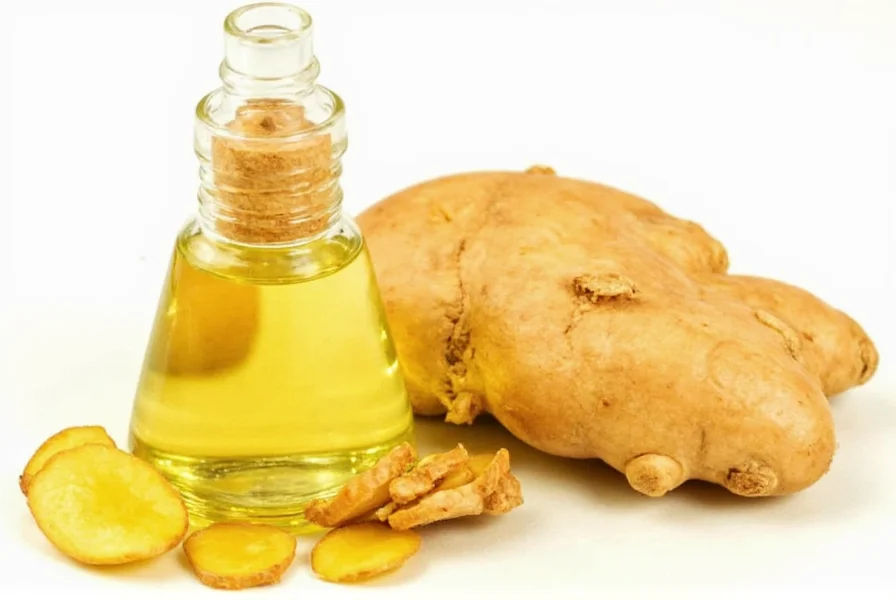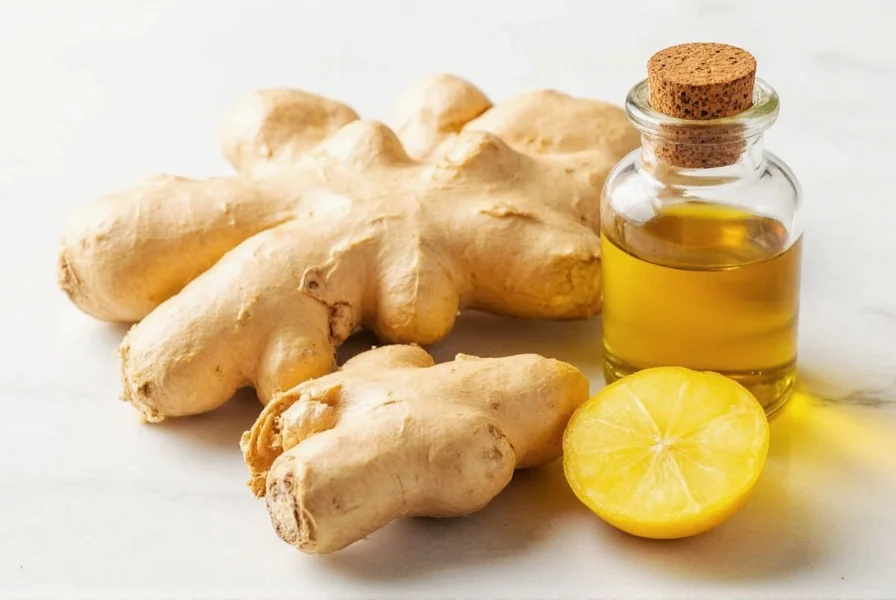
Understanding Ginger Oil Composition and Extraction
Ginger oil represents the concentrated essence of ginger root through steam distillation or CO2 extraction. Unlike fresh ginger which contains approximately 1-3% essential oil by weight, the extracted oil delivers potent bioactive compounds in higher concentrations. The primary chemical constituents include gingerols (particularly 6-gingerol), zingiberene, beta-bisabolene, and ar-curcumene. These compounds work synergistically to produce ginger oil's characteristic aroma and therapeutic properties.
Quality varies significantly among products. Therapeutic-grade ginger oil should specify Zingiber officinale as the botanical name and indicate whether it's derived from fresh or dried root. Fresh root extraction typically yields higher gingerol content, while dried root produces more zingerone. Understanding these distinctions helps users select appropriate products for specific applications.
Evidence-Based Benefits of Ginger Oil
Research supports several specific applications for ginger oil. A 2022 meta-analysis published in Complementary Therapies in Medicine confirmed ginger's effectiveness for nausea relief, particularly postoperative and pregnancy-related nausea. The study noted that aromatherapy using diluted ginger oil reduced nausea intensity by 30-40% compared to placebo.
| Application | Research Support Level | Recommended Usage |
|---|---|---|
| Nausea relief | Strong (multiple RCTs) | Inhalation of 1-2 drops diluted in carrier oil |
| Muscle pain reduction | Moderate (limited studies) | 2% dilution in massage oil |
| Digestive support | Promising (preliminary research) | Aromatherapy or diluted topical application |
| Anti-inflammatory effects | Emerging (in vitro studies) | Topical application with proper dilution |
For pain management, a 2021 study in Journal of Alternative and Complementary Medicine demonstrated that topical application of 2% ginger oil solution reduced muscle soreness by 25% compared to control groups. The anti-inflammatory mechanism appears related to gingerols' ability to inhibit COX-2 enzymes, similar to conventional NSAIDs but through different pathways.
Safe Usage Guidelines for Ginger Oil
Proper dilution remains critical for safe ginger oil application. The recommended dilution ratio ranges from 0.5-2% for adults, translating to 1-4 drops of essential oil per teaspoon of carrier oil like coconut or jojobe. Higher concentrations risk skin irritation, particularly for sensitive skin types. Always perform a patch test 24 hours before widespread application.
Special populations require additional precautions:
- Pregnant women should consult healthcare providers before use, especially during first trimester
- Children under 6 years should avoid topical application
- Individuals taking blood thinners should exercise caution due to potential interactions
- Those with gallstones should consult physicians before internal use
Ginger Oil Applications: Practical Methods
Different applications serve specific purposes effectively. For motion sickness prevention, combine 2 drops ginger oil with 1 drop peppermint oil in a personal inhaler. During long trips, inhale as needed. For post-exercise muscle recovery, prepare a massage oil with 3 drops ginger oil and 2 drops arnica oil diluted in one ounce of sweet almond oil.
When addressing digestive discomfort, create a warming abdominal blend using 1 drop ginger oil, 1 drop fennel oil, and 2 tablespoons of fractionated coconut oil. Apply with gentle circular motions on the abdomen. This method leverages both topical absorption and aromatherapy benefits.

Quality Assessment: Selecting Therapeutic Grade Products
Not all ginger oils deliver equal therapeutic value. Look for these quality indicators:
- GC/MS testing reports verifying chemical composition
- Botanical name Zingiber officinale specified
- Country of origin disclosure (Indian and Nigerian ginger often show higher potency)
- Extraction method details (steam distillation preferred for therapeutic use)
Avoid products labeled "fragrance oil" or those lacking transparency about sourcing. Pure ginger oil typically costs $8-15 per 5ml bottle from reputable suppliers. Prices significantly lower than this range often indicate adulteration or poor quality.
Limitations and Realistic Expectations
While ginger oil shows promise for specific applications, it's crucial to maintain realistic expectations. Current research doesn't support using ginger oil as a treatment for serious medical conditions like cancer or diabetes. The evidence remains strongest for nausea management and mild pain relief.
Essential oils work best as complementary approaches within a comprehensive wellness strategy. They shouldn't replace conventional medical treatments for diagnosed conditions. Always consult healthcare professionals before using ginger oil alongside prescription medications, as potential interactions exist with anticoagulants and diabetes medications.











 浙公网安备
33010002000092号
浙公网安备
33010002000092号 浙B2-20120091-4
浙B2-20120091-4